Dong Van Karst Plateau Geopark in Ha Giang
The Dong Van Karst Plateau Geopark is a geological site located in Ha Giang Province, in northern Vietnam. It was designated as a UNESCO Global Geopark in 2010 as a member of the UNESCO Global Geoparks Network.
The geopark covers an area of approximately 2,356 square kilometers and is renowned for its limestone karst mountains, deep canyons, caves, cliffs, and unique rock formations. But what makes this site so special to have become such a favored travel destination for nature enthusiasts and adventurous travelers?
Why is Dong Van Karst Plateau so special?
In addition to its remarkable geology, the site is rich in biodiversity and culture. It is home to various ethnic minority like communities the H'Mong, the Hoa, the Tay and the Dzao that have preserved their ancestral traditions for centuries. The people of the region are engaged in upland agriculture, terrace farming, livestock rearing, and craftsmanship. The geopark is also home to a diverse ecosystem, with a wide array of flora and fauna, including rare species.
For its geological, ecological and cultural values, the Dong Van Karst Plateau is definitely worthy to be recognised as a Global Geopark by UNESCO and is an extraordinary travel destination.
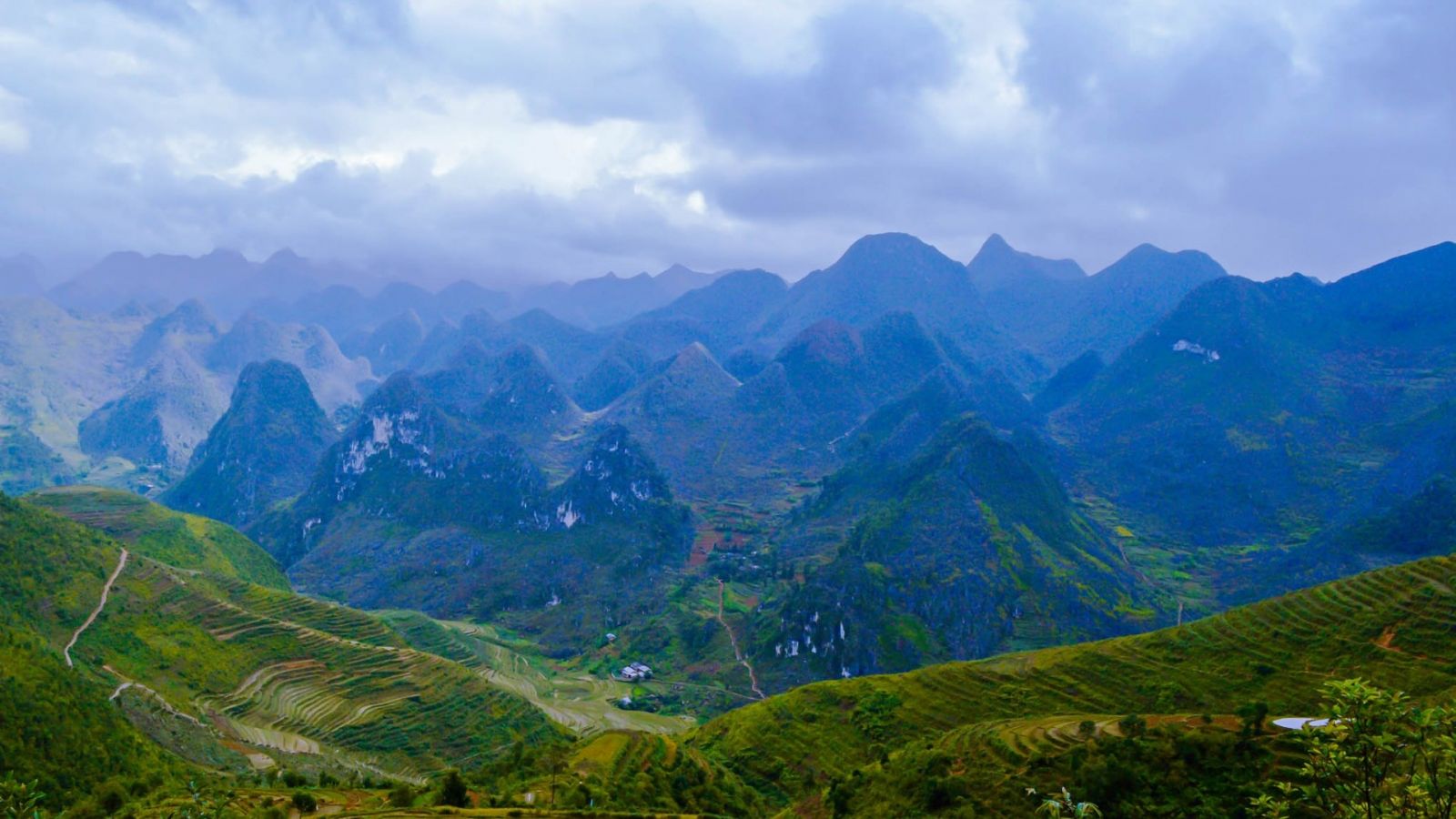
Dong Van Karst Plateau
Best time to visit Dong Van Karst Plateau?
Blessed with a cool climate and breathtaking landscape, Ha Giang and particularly the Dong Van Karst Plateau is among the most travel-worthy places in Vietnam. Dong Van is beautiful year round: in the spring, you will get to see a more romantic Ha Giang with fields of peach blossoms, plum flowers and scorching red cotton flowers along the side of mountain passes; in the summer, admire the intricate work of locals as they water their terraced rice fields using a complex system of bamboo pipelines; in the fall, watch as these rice terraces turn a golden colour as it is harvesting season; and in the winter, let yourself be mesmerized by beautiful fields of lilac buckwheat flowers complimented by the vast mountains from afar.
So you can choose to visit the Dong Van Karst Plateau in Ha Giang at any time of the year and still be amazed by its spectacular beauty.
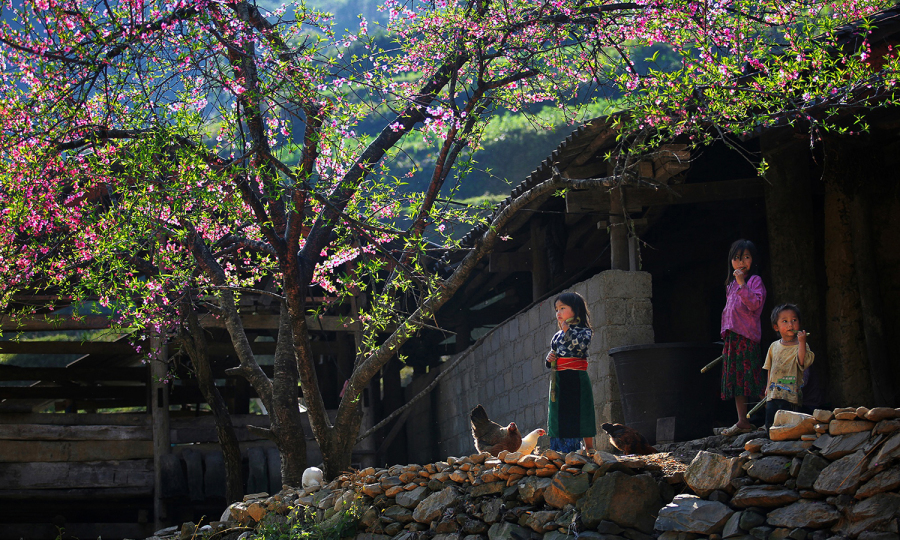
Dong Van Karst Plateau in the spring
How to get to Dong Van Karst Plateau?
To get to the Dong Van Karst Plateau, you will first need to get to Ha Giang. Most people depart from Hanoi, but you also can move from Sapa, which is closer because Lao Cai and Ha Giang are neighboring provinces. From there, you can rent a motorbike or take another bus to Dong Van Karst Plateau.
There are 3 ways that you can get to Ha Giang: by bus, by motorbike or by private cars.
Taking a bus is an affordable choice to travel to Ha Giang but it might take you more time, since Ha Giang is quite far from Hanoi (300 km) and Sapa (235 km), not to mention multiple stops to pick up and drop off customers. Traveling by motorbike requires good health and driving experience. The safest and fastest choice would be renting a private car, especially for small groups of visitors.
Read all about how to get to and around Ha Giang and its adjacent districts here:
How to get to and around in Ha Giang
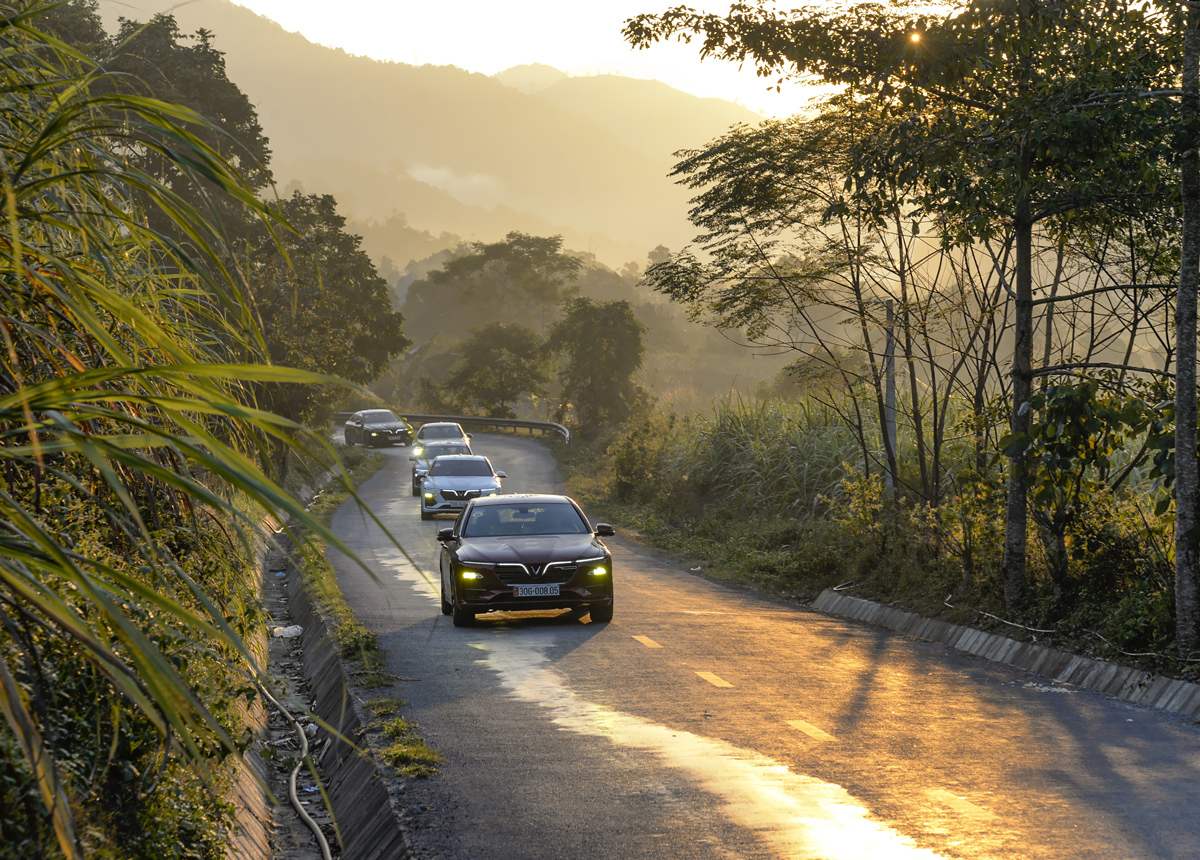
Private cars to Dong Van Karst Plateau
Exploring Dong Van Karst Plateau
The Dong Van Karst Plateau spreads across 4 districts of Ha Giang: Dong Van, Yen Minh, Meo Vac and Quan Ba, so you can imagine the plethora of sites, destinations and activities that this amazing geopark offers.
Ma Pi Leng Pass
Ma Pi Leng pass, connecting Dong Van and Meo Vac, is a spectacular yet challenging 20 km mountain route. This pass, whose name means "bridge of a horse's nose" in the H'Mong language, is part of Four Great Passes in Northwest Vietnam, along with O Quy Ho Pass, Pha Din Pass and Khau Pha Pass. Take the Ma Pi Leng Pass and let it guide you through rugged but breathtaking landscapes with majestic limestone mountains, deep canyons, and the graceful emerald Nho Que river. This route is not for the faint of heart, so challenge yourself and be rewarded with a rush of adrenaline and satisfy your inner explorer.
If that interests you, here is a detailed guide for Ma Pi Leng Pass:
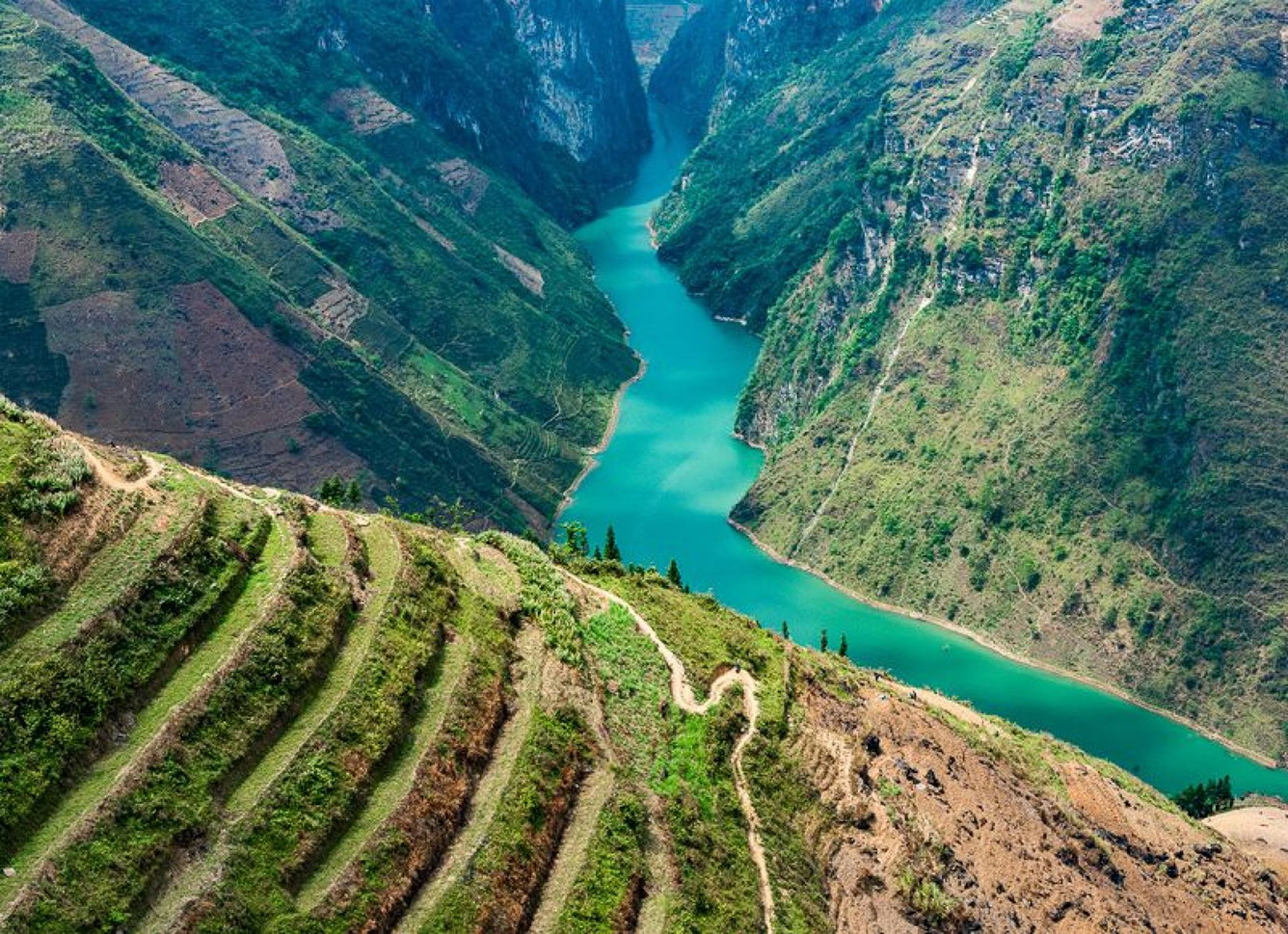
Ma Pi Leng Pass
Quan Ba Heaven's Gate and Quan Ba Twin Mountains
Quan Ba Heaven’s Gate is one of five most famous Heaven’s Gates in Vietnam, along with Linh Quy Phap An Heaven’s Gate (Lam Dong), Nghinh Phong Heaven’s Gate (Vung Tau), O Quy Ho Heaven’s Gate (Sapa) and Tri Ton Heaven’s Gate (An Giang). Quan Ba Heaven’s Gate or Quan Ba Pass is a must-visit in Ha Giang where you can admire the majestic beauty of karst mountains. From Quan Ba Pass, there is a viewpoint overlooking the Quan Ba Twin Mountains.
The beautiful mountains, as the name suggests, are 2 identical adjacent mountains, which resemble a woman’s chest, located in Quan Ba Village, about 40 km from Ha Giang city center. Legend has it, there was a fairy that came to earth, fell in love with a H’mong man and bore him a child. The Jade Emperor found out and made her go back but her child was too young, so she decided to leave behind her pair of breasts on earth to feed him. The pair of breast grew and became the twin mountains that we know today.
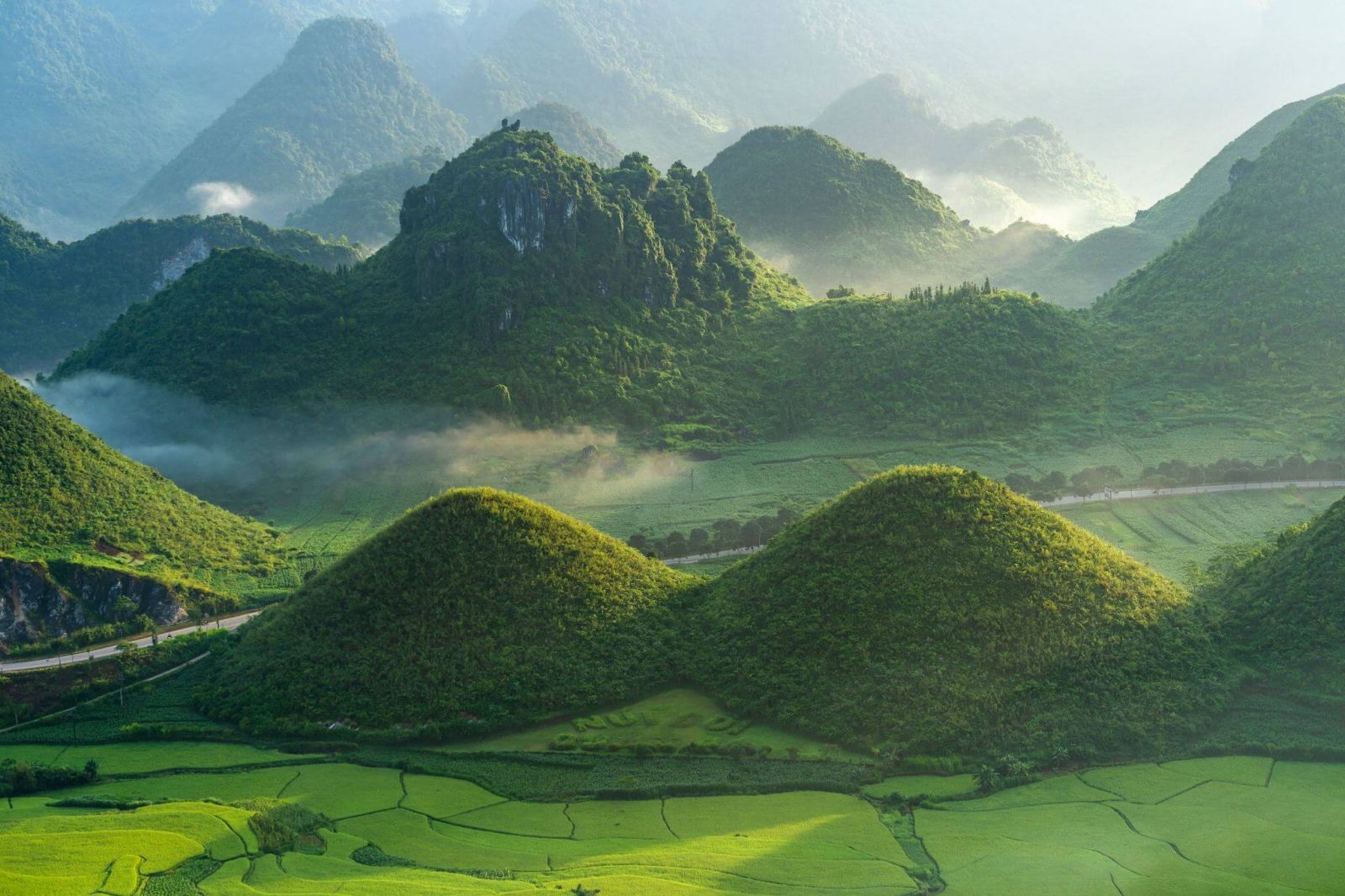
Quan Ba Twin Mountains
Dong Van Ancient Town
When mentionning ancient towns, Hanoi and Hoian might be the first things that come to mind, but have you heard of or been to Dong Van Ancient Town?
It's a small town in Dong Van district that has been around for hundreds of years, and is home to multiple ethnic groups like the H'Mong, the Hoa, the Tay and the Dzao. Because Ha Giang is the northern-most province of Vietnam, neighboring China, the ancient houses in this town are built in a unique style influenced by Chinese architecture. Wandering around this Dong Van Ancient Town, you will find a collection of centuries old houses with yin-yang tiled roofs, sometimes decorated with red lanterns.
If you happen to be in town on a Sunday, you can check out Dong Van Sunday Market, where people of different ethnic minorities gather to buy and sell local goods and socialize, come and be immersed in the authentic culture of the Northwest.
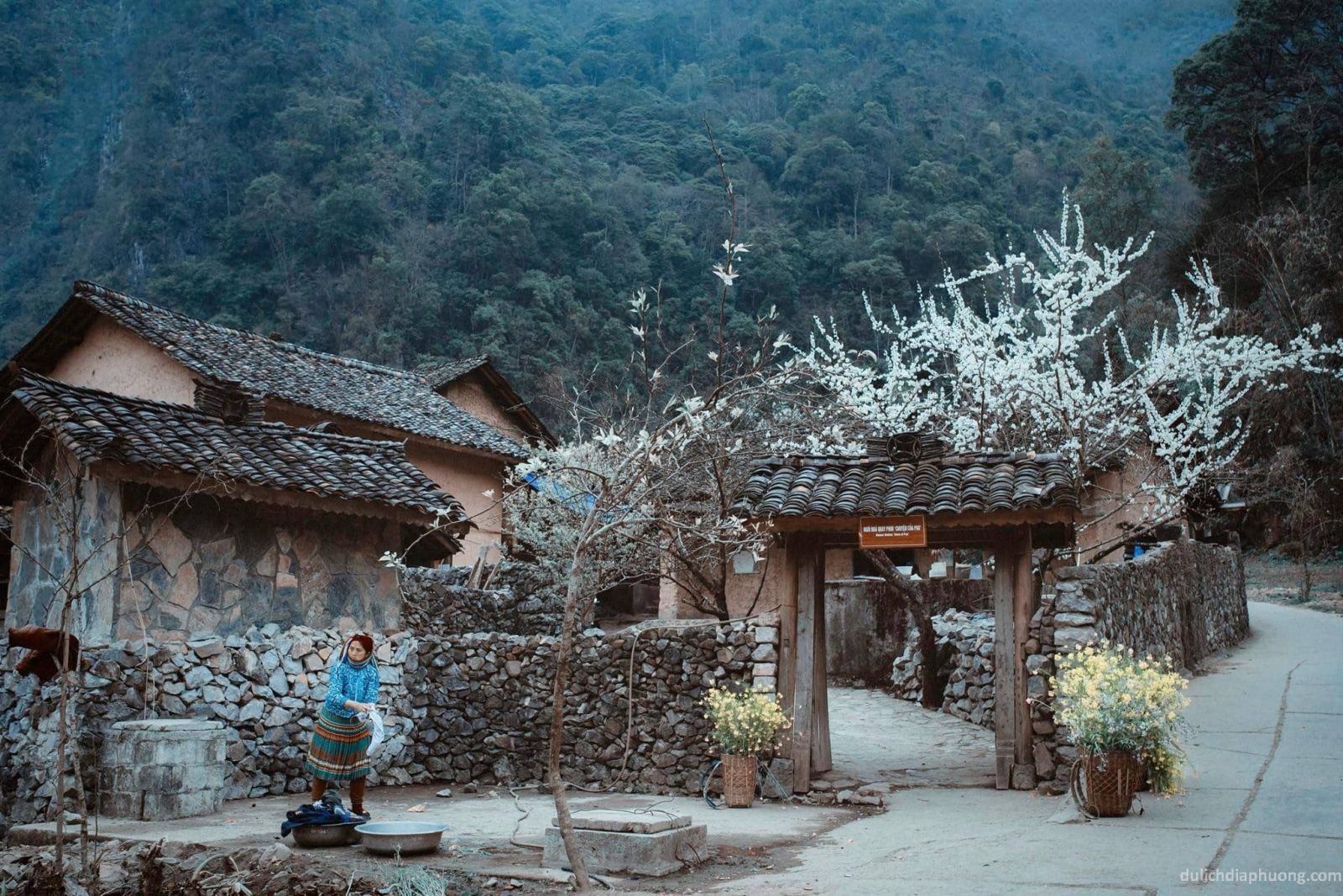
Dong Van Ancient Town
Lung Cu Flag Tower
The Lung Cu Flag Tower, which lies at the top of Dragon Mountain in Dong Van Karst Plateau, Ha Giang, is the northern-most point of Vietnam. After climbing over 800 steps, you will reach the 33.15 meter octagonal Lung Cu flag pole, with a flowing 54 square meter national flag atop, representing the 54 ethnic groups of Vietnam. Make your way to the top and you will not be disappointed as you will be able to witness a cultural heritage site and symbol of patriotism as well as surrounding panoramic landscapes.
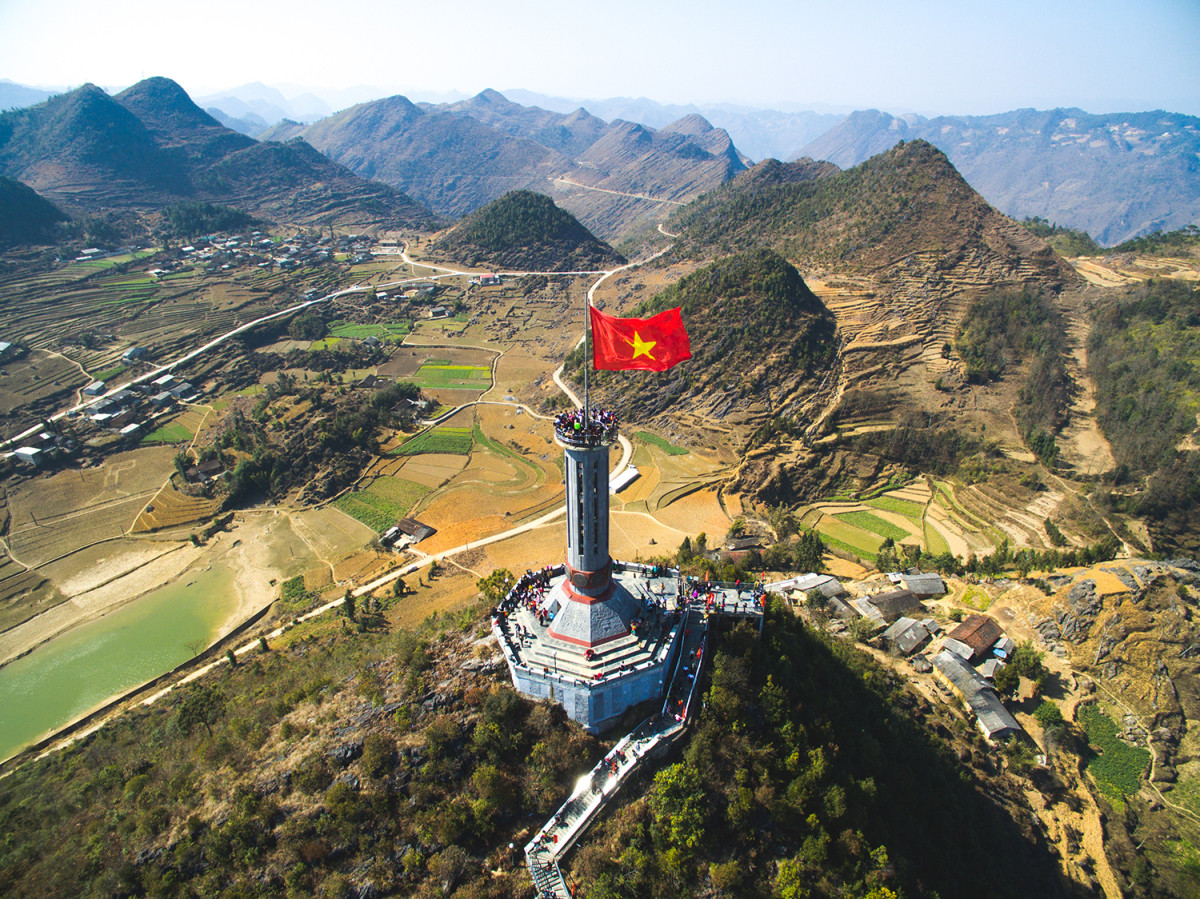
Lung Cu Flag Tower
Final thoughts
The Dong Van Karst Plateau Geopark in Ha Giang offers a unique experience to visitors, combining spectacular natural beauty with a rich cultural heritage. It provides opportunities for hiking, geological excursions, visits to traditional villages, and a chance to explore the cultural diversity of the area. It is a favored destination for geologists, nature enthusiasts, and adventurous travelers.
Above are only some of the destinations that we recommend visiting when in Dong Van Karst Plateau, there are so much more to see and not enough time. If you are interested and want to visit them all, check out some of our Ha Giang Loop tours that include these must-visit destinations:




.jpg)


